408 New Species Revisited
Posted by: Loren Coleman on March 23rd, 2009

Photo: Alan Rabinowitz.
The saola (Pseudoryx nghetinhensis) was found in the former Annamite Mountains of Vietnam and Laos, in 1992 by a team of scientists from the Vietnamese Ministry of Forestry and WWF; it was the first large mammal to be discovered anywhere in the world since 1936.
What has happened since then?
At Cryptomundo, on February 14, 2009, I wrote of the new study by Paul Ehrlich and Gerardo Ceballos, who chronicled that 408 “new” species of mammals had been discovered since 1993.
You may recall some of those mammals are quite exciting.
Now, Darren Naish has summarized their new paper, in some depth, over at his Tetrapod Zoology blog. As always, Naish’s done a comprehensive job in looking at the academic facts, separating out the splitting species samplings and getting to the hard core of the good news: lots of new animals are being found.
Go there for more details, and, in the meantime, here are some images of a few of these new mammals, once again, to ponder.
Yes, there are still big animals out there to be discovered and there is more work to be done!
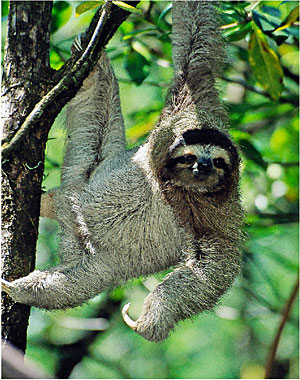
Bradypus pygmaeus is a pygmy three-toed sloth discovered in 2001 on a tiny Panamanian island, where it dwells in mangrove forests. Photo: Bill Haycher
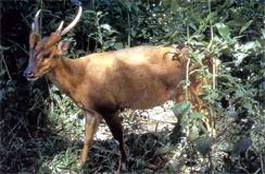
Photo: W. Robichaud.
Giant muntjac Megamuntiacus vuquangensis was first discovered in 1994 in northcentral Vietnam. It has since been found all along the Truong Son (formerly “Annamite”) Mountains that straddle the border between Vietnam and Laos, and the Central Highlands, as well as in eastern Cambodia.

The grey-faced sengi, Rhynchocyon udzungwensis, a giant elephant-shrew, was first filmed in 2005, and confirmed in 2006. Photo: Francesco Rovero.

The news was announced in 2006 of the discovery of the new giant peccary, Pecari maximus, in Brazil’s River Aripuana basin.
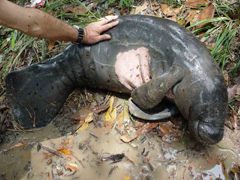
In 2007, a new dwarf manatee (Trichechus bernhardi) was discovered in South America.
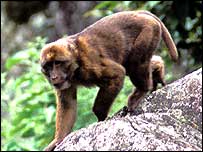
Arunachal macaque Macaca munzala was discovered in 2004, in the mountains of the Arunachal Pradesh in northeastern India. It lives at high altitudes, between 2000 meters and 3500 meters, making it one of the highest-dwelling primates. Photo: BBC.
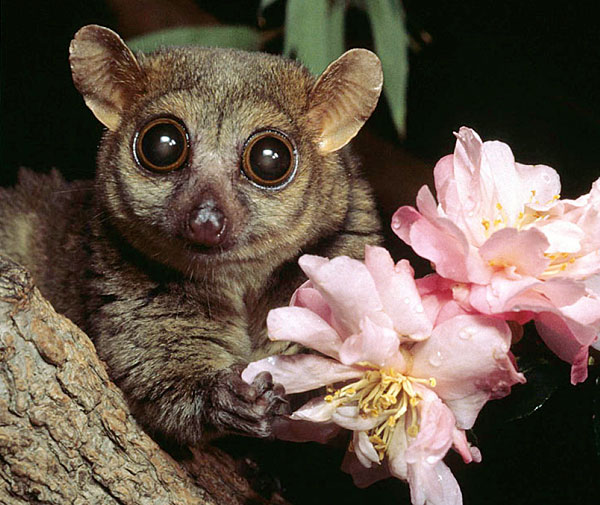
Mirza zaza, also called the northern giant mouse lemur, was discovered in Madagascar in 2005. Photo: David Haring / Duke Lemur Center.
Continue cryptozoology into the future. Show your support today and…
Thank you.
About Loren Coleman
Loren Coleman is one of the world’s leading cryptozoologists, some say “the” leading living cryptozoologist. Certainly, he is acknowledged as the current living American researcher and writer who has most popularized cryptozoology in the late 20th and early 21st centuries.
Starting his fieldwork and investigations in 1960, after traveling and trekking extensively in pursuit of cryptozoological mysteries, Coleman began writing to share his experiences in 1969. An honorary member of Ivan T. Sanderson’s Society for the Investigation of the Unexplained in the 1970s, Coleman has been bestowed with similar honorary memberships of the North Idaho College Cryptozoology Club in 1983, and in subsequent years, that of the British Columbia Scientific Cryptozoology Club, CryptoSafari International, and other international organizations. He was also a Life Member and Benefactor of the International Society of Cryptozoology (now-defunct).
Loren Coleman’s daily blog, as a member of the Cryptomundo Team, served as an ongoing avenue of communication for the ever-growing body of cryptozoo news from 2005 through 2013. He returned as an infrequent contributor beginning Halloween week of 2015.
Coleman is the founder in 2003, and current director of the International Cryptozoology Museum in Portland, Maine.










Of all these wonderful species discovered, am I the only one thinking that all the new species are quite ordinary, or incredibly similar to those we have discovered already (we know of the genus at least). Very few, barring the giant squid and ‘heel-walkers’ (mantophasmatodea, a new insect ORDER found down the road by one of my lecturers et al.) look pretty much like what we have seen already. Nothing close to the hopes of finding reptilian chupas or mothman etc., makes you wonder doesn’t it?
All the new stuff we find is pretty run of the mill.
UCTZoology: don’t fret.
I mean, except for the saola (which was really new) I agree with you. A giant muntjac or a giant peccary or a dwarf manatee could be overlooked by many to whom they appear to be similar animals we already know about.
To me the marquee cryptids – and I speak especially of such as the sasquatch, yeti and orang pendek – are animals for which science hasn’t even reviewed copious evidence. A completely different “beast” from most animal discoveries.
It doesn’t matter to me how many new species are found by scientists pushing further out on already-blazed trails. It is, in fact, almost irrelevant to the discussion of the marqueee cryptids, for which science isn’t even looking.
UCTZoology
Isnt it a bit of a contradiction to write of ”wonderful species discovered” and then refer to them as ”ordinary, incredibly similar” and worst ”run of the mill”. I think your first description was nearer the mark and an analysis of the actual discoveries would bear this out.
Perhaps following on from the discovery of the Saola and the giant squid, the giant peccary and the very special Laotian rock rat, the Ammamite striped rabbit which is certainly not run of the mill! I know you could say that frogs are just frogs but there are some very special new frogs and similar creatures like the new huge stick insect and more to come!
Not forgetting the biggest of them all the Homo floresiensis. Whatever state this particular anthropologic adventure is in, it certainly is not run of the mill.
I know apart from the Hobbit these are not mind blowing, but i think its pretty good fare for those interested in new discoveries. It is a beautiful thing to see the mysteries of nature unfold even if it is mixed with some sadness because of what might happen to them if they have some properties that man desires and can exploit apart from just their being.
Scientists are now looking for alien life on earth, small probably, like the new bugs found living in the atmosphere, so there is real hope for you still. Then there is the fairly recent matter of the ubiquity of life in earth totalling a hugh biomass-more then on the surface probably
hey i just noticed something…..that first critter looks kinda like a unicorn; In Early Europe the unicorn is described as having a black horn turned backwards….. and if you look closely it does have two horns but it looks like it just has one 😀 tis’ makes you wonder…